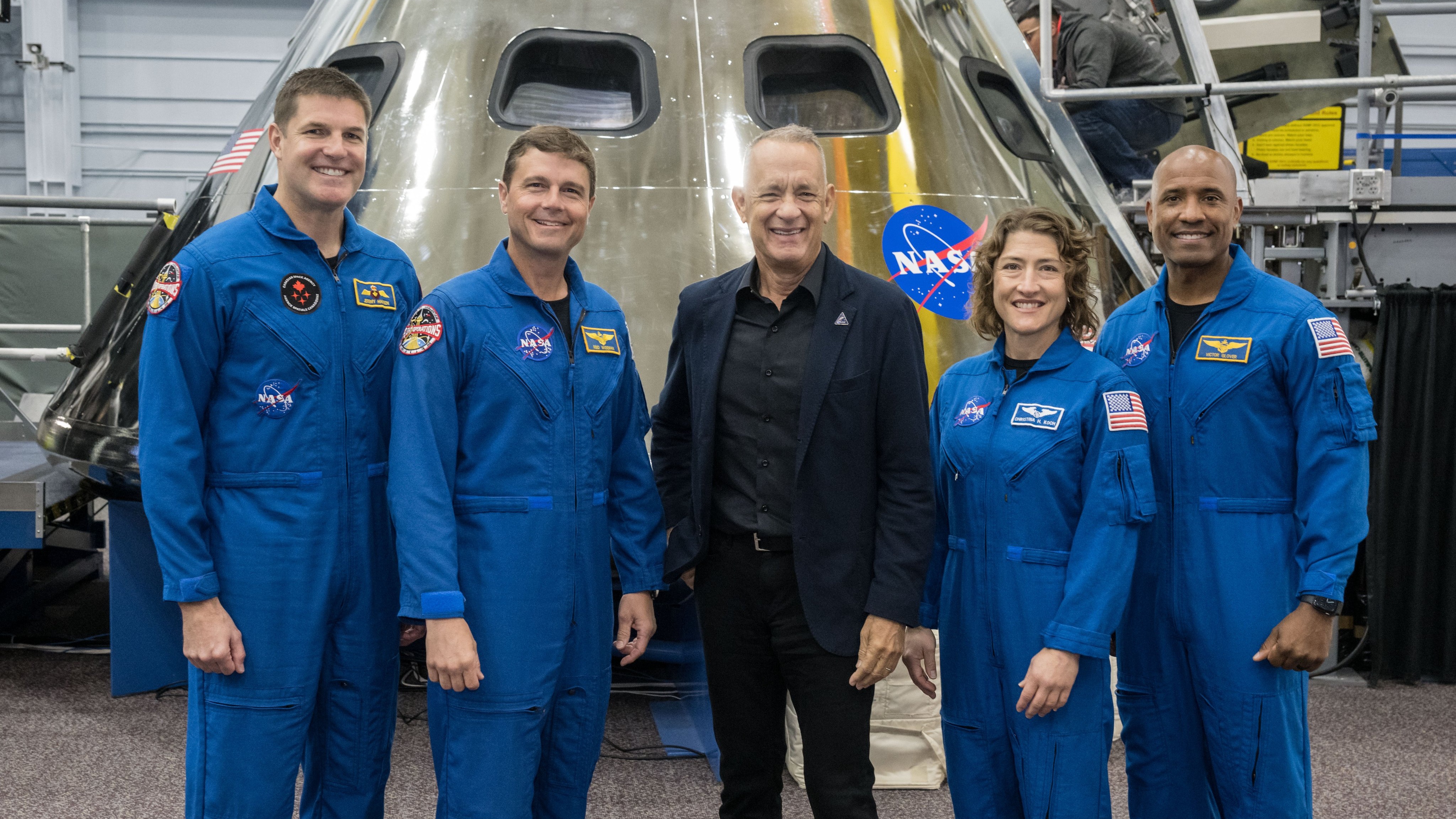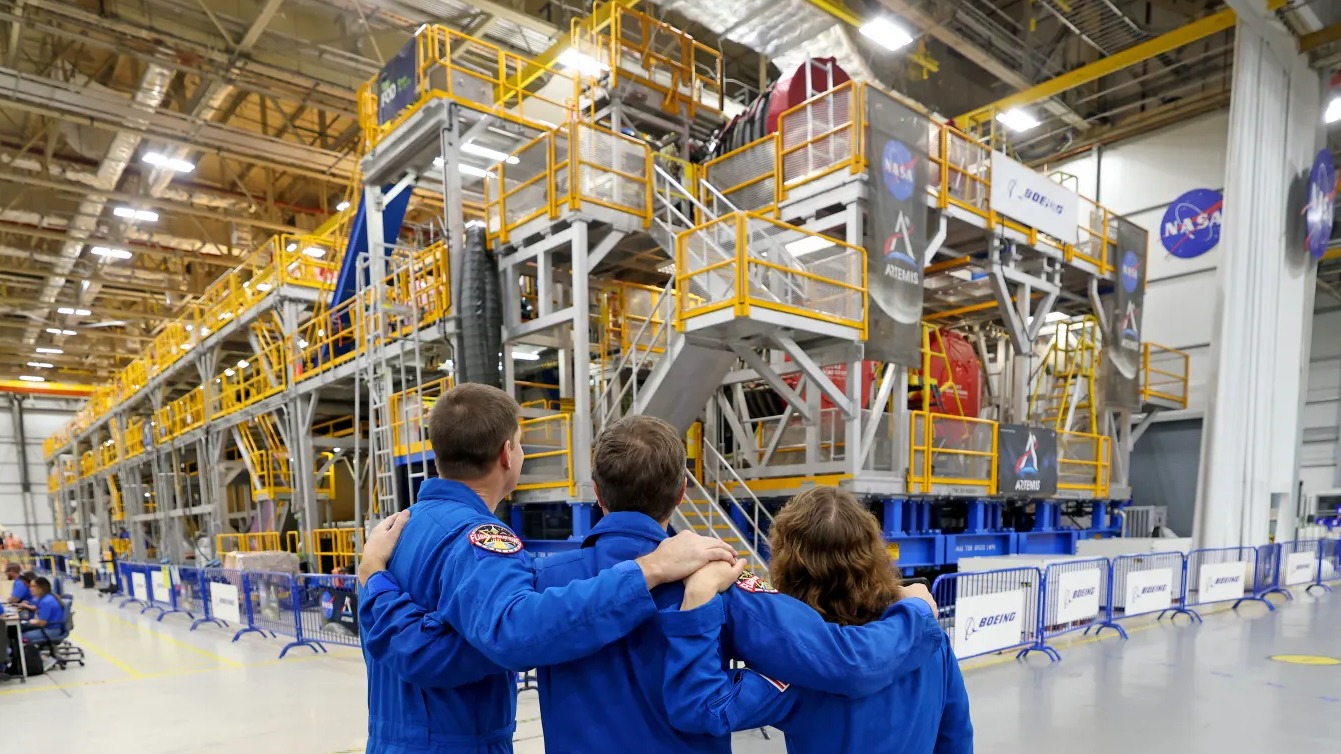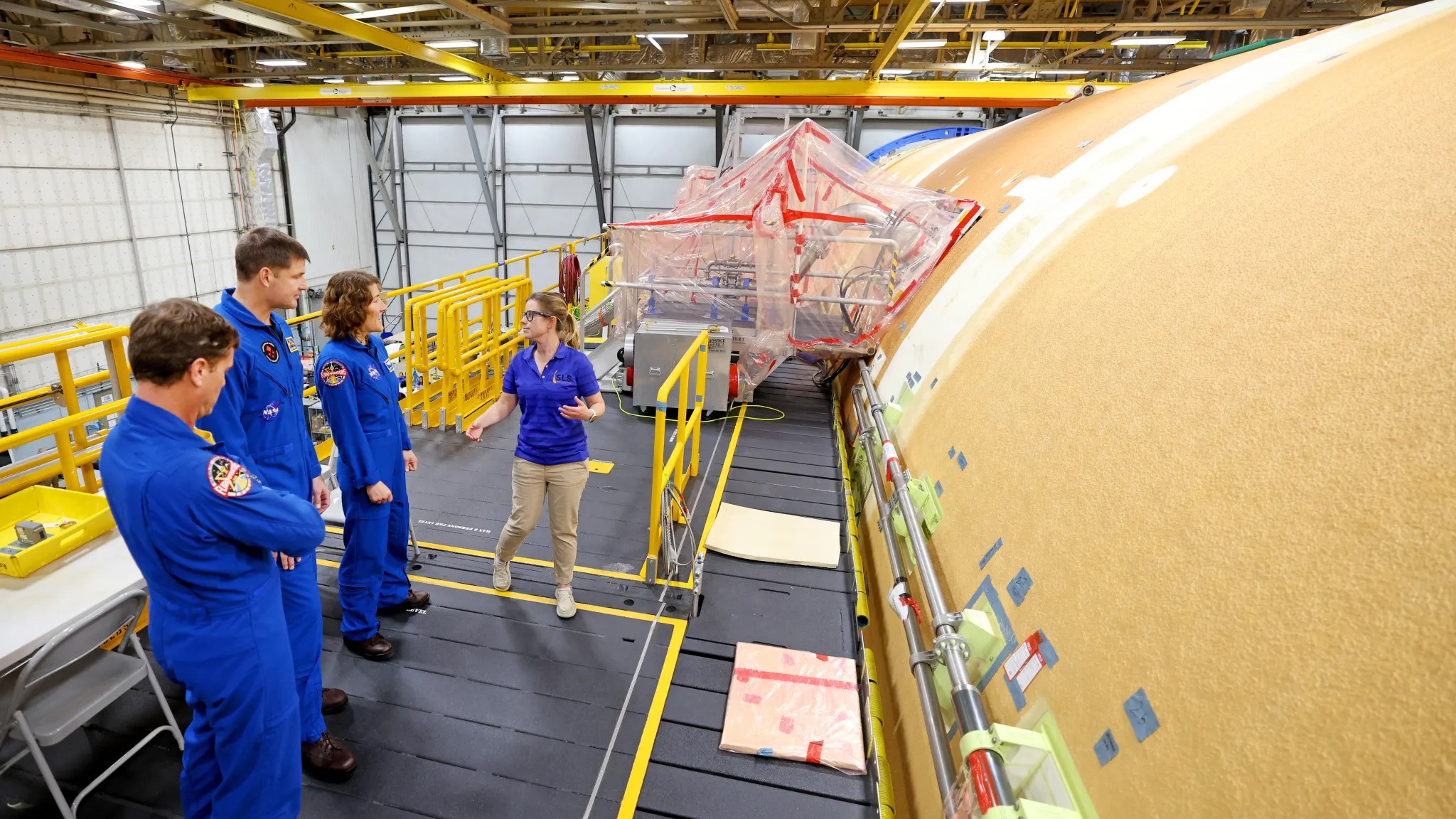Tom Hanks visits Artemis 2 moon astronauts and NASA Mission Control
Houston, we don't have a problem.

Iconic actor Tom Hanks, who once played a moon astronaut in film, met with four real-life astronauts on the verge of exploring lunar realms themselves.
"Apollo 13" actor Hanks touched down in Houston — where happily, he did not report a problem — to meet with the Artemis 2 crew. Those four astronauts posed with Hanks, in front of a mockup of the Orion spacecraft, between training for their round-the-moon mission no earlier than 2024, NASA officials reported on X (formerly Twitter) on Saturday (Nov. 18).
In space circles, Hanks is best known for playing NASA astronaut Jim Lovell, the real-life commander of Apollo 13, in a 1995 Hollywood hit. The movie showed how Mission Control, the astronauts' families and the crew themselves came together to solve an emergency on the way to the moon.
Related: Tom Hanks would clean toilets for a chance to go to space: report
Hanks not only spoke with the Artemis 2 crew, but stopped by two sections of Mission Control at NASA's Johnson Space Center (JSC) at the least: The freshly updated Apollo program mission control center that saw Apollo 13 and other missions go to the moon, along with the International Space Station's Mission Control. Hanks even spoke with some of the Expedition 70 astronauts on board the ISS, NASA reported.
NASA is now restarting human moon exploration with four astronauts that will circle the moon: NASA's Reid Wiseman, Victor Glover and Christina Koch and the Canadian Space Agency's Jeremy Hansen. NASA is leading a fast-growing coalition of international partners to lunar realms under the Artemis Accords, which also serve as a framework for peaceful space exploration norms.
Prior to meeting with Hanks, three of the Artemis 2 crew jetted to NASA's Michoud Assembly Facility in New Orleans on Nov. 16. There, they reviewed the powerful core stage of the Space Launch System (SLS) rocket that will bring them to Earth orbit and eventually, on to the moon. The visit also marked the one-year anniversary of the launch of Artemis 1, an uncrewed mission that successfully tested SLS and the Orion spacecraft during its own mission late in 2022.
Get the Space.com Newsletter
Breaking space news, the latest updates on rocket launches, skywatching events and more!
Related: Artemis 2 moon astronaut says crew is ready for ambitious 2024 mission

It's been a busy few months for the Artemis 2 crew since they were named in April at a ceremony at Ellington Field, nearby JSC. The quartet are working on learning more about Orion as well as medical procedures, ahead of an expected recovery exercise at sea with NASA and the U.S. Navy.
Pieces of the Artemis 2 hardware are also under assembly at NASA centers across the U.S. At Michoud, the four RS-25 engines that will power the core stage were secured Oct. 6 after each was individually attached via "soft mates" on various dates in September.

"Engineers will perform testing on the entire stage and its avionics and electrical systems, which act as the 'brains' of the rocket to help control it during flight," NASA officials wrote in October. Once testing is through in a few months, the core stage will make its way to the launch site at NASA's Kennedy Space Center via barge.
There is other Artemis 2 construction work ongoing at KSC already. Pieces of the twin solid rocket boosters for Artemis 2 arrived by train in September and are being assembled, first starting with each booster's aft assembly for steering the rockets during flight.
Artemis 2's Orion completed its power-on test on Nov. 6 at KSC, following a crucial mate between the American-made crew module and the European Service Module. The spacecraft will soon undergo a one- or two-week "closed-loop mission" test to simulate a mission, meaning "navigation, propulsion and other subsystems are reacting correctly to maintain the mission course," Dominique Siruguet, ESM assembly integration and verification engineer at the European Space Agency, said in a Nov. 6 statement.
Join our Space Forums to keep talking space on the latest missions, night sky and more! And if you have a news tip, correction or comment, let us know at: community@space.com.

Elizabeth Howell (she/her), Ph.D., was a staff writer in the spaceflight channel between 2022 and 2024 specializing in Canadian space news. She was contributing writer for Space.com for 10 years from 2012 to 2024. Elizabeth's reporting includes multiple exclusives with the White House, leading world coverage about a lost-and-found space tomato on the International Space Station, witnessing five human spaceflight launches on two continents, flying parabolic, working inside a spacesuit, and participating in a simulated Mars mission. Her latest book, "Why Am I Taller?" (ECW Press, 2022) is co-written with astronaut Dave Williams.
